Experiencing European culture on Korean grounds
CULTURAL VILLAGES receive critique for being gaudy appropriations of another country. Instead of diminishing their authenticity, one could take a gander through the colorful streets of a European village, admire the historical architecture behind buildings, and experience live marionette performances.
Petite France
Upon entering Petite France, the colorful, wooden houses in a medieval-based village make one forget they are on a mountain hill of Gapyeong. The houses are patterned with traditional French half-timbered architecture—emulating the homes built in medieval times [1]. The vibrant colors found along the streets are not just decorations. Houses’ colors represented people's social class or occupation back in Medieval France [2].
In an interview with The Yonsei Annals, the creator of Petite France, Han Hong-sob, said it became his lifelong dream to recreate a French village in Korea after visiting France. To resemble the villages he held at heart, Han hired French architects to construct every house in Petite France. Visitors can also watch traditional puppet shows in the theater and marionette performances in the outdoor amphitheater. These performances date back to French Christian culture during the middle ages [3]. Then, during the Counter-Reformation, these performances became less sacred, shifting towards neighborhood entertainment [4].
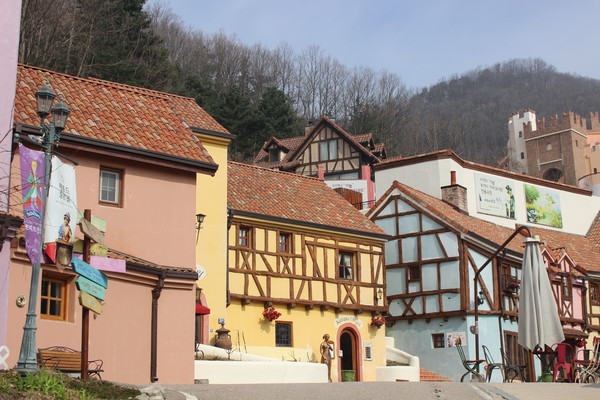
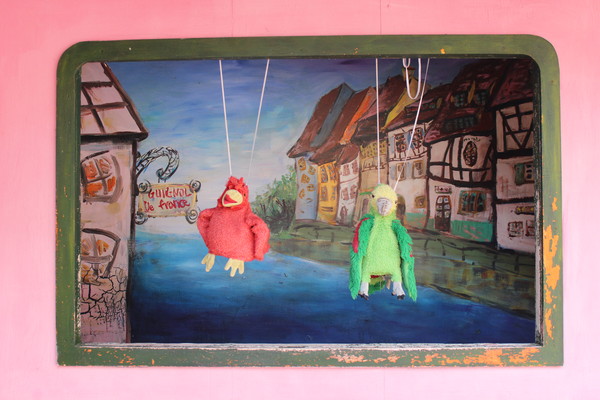
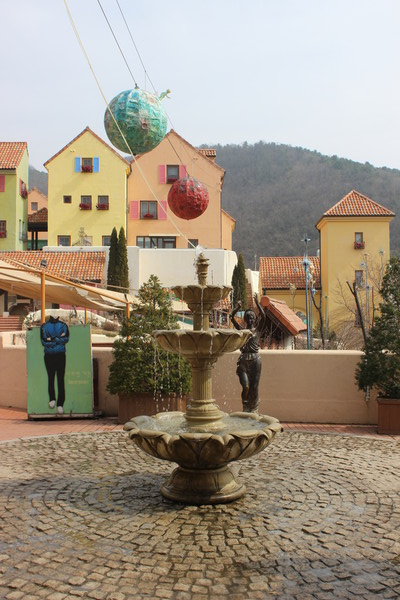
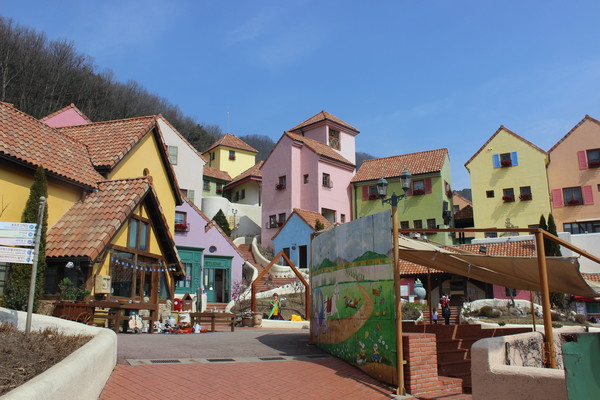
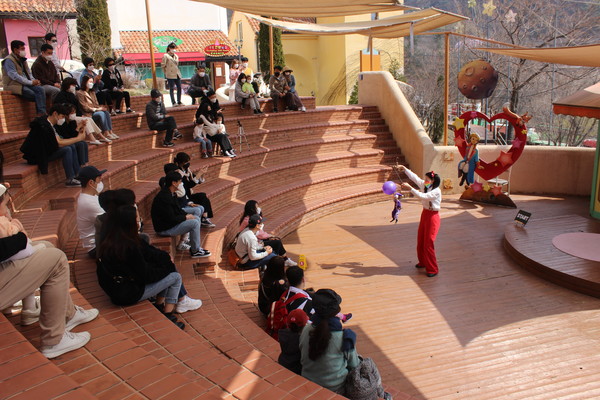
Edelweiss
Found deep within the mountains of Gapyeong is another cultural village named Edelweiss. The houses along the central pathway imitate Switzerland’s affluent regions’ architecture, while the area towards the mountains displays a more orthodox suburban agricultural area. There is also an animal farm at the top of the agricultural zone, where visitors can pet and feed live farm animals such as sheep, rabbits, and chickens. Notably, Edelweiss stands on an incline, which mimics the agricultural festivals and celebrations such as the Alpine Descent, where sheep, cattle, and goats are brought down from the high mountains and celebrated in the Catholic tradition in the city before being brought back up again for fall [5][6].
The rooftops at Edelweiss are made to mirror the unique traditional Swiss architecture, where tavillonneurs place singular wooden shingles to fashion the roof [7]. Initially, the single wooden shingles were fashioned into roofing to insulate against colder winters [8]. One more notable feature of Edelweiss is the many painted paintings and murals on the street walls, museums, benches, and even on houses. In an interview with the Annals, Head of Department Ko Do-yeong said the paintings were done by a local painting company that researched myriad urban street art paintings from Zurich, Switzerland [9].



Gyeonggi English Village
The Western edifices of Gyeonggi English Village stand out in the humble province of Paju. Surrounded by villages inspired by English architecture, the village offers an English educational camp for children and families planning to live abroad [10]. The entire village is elaborately woven with tramway tracks, much like towns in England, where trams have existed since the late 19th century [11]. Nowadays, the tramways are utilized for more efficient transportation routes through urban sectors that would otherwise be crowded with motor vehicles [12].
The village takes influence from a diverse range of English architecture. Since the end of World War II, some suburban homeowners wanted to distinguish their homes from previous red brick homes, which lead to a hike in production, shipping, and construction costs of brick houses [13]. Yet, they are still a prominent part of English culture today. The English bricklaying structure is most common in the English village, which matches the buildings in cities like Birmingham, Manchester, and Liverpool [14]. Other buildings are constructed with stone that resembles cities such as Oxford and Cambridge [15].
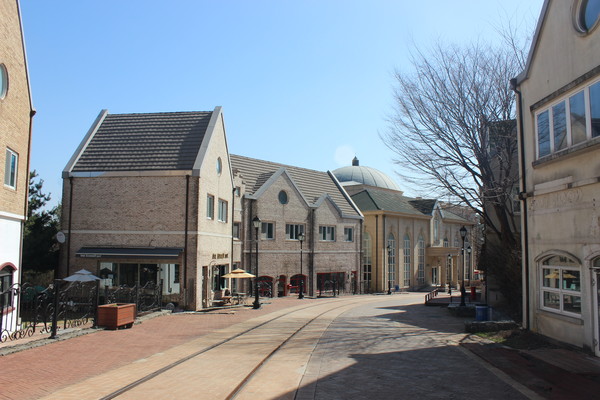
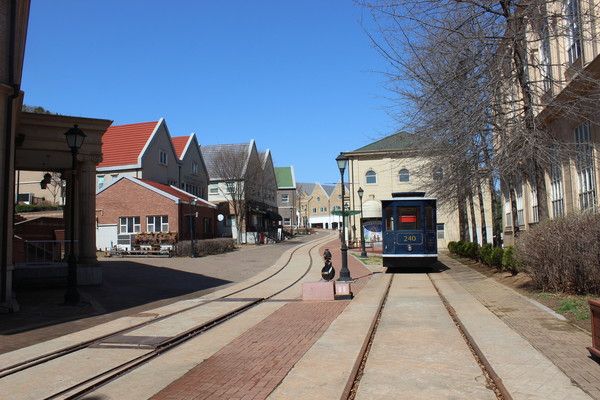
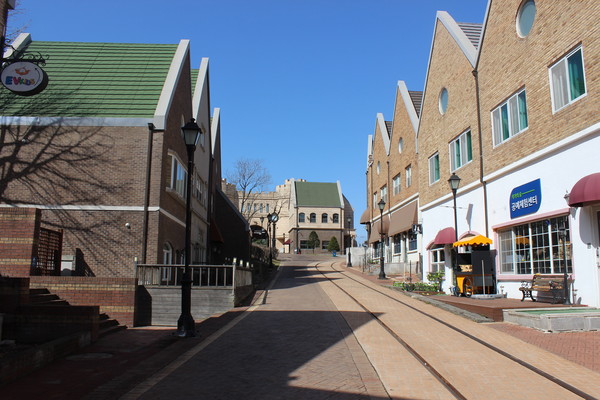
* * *
Petite France presents a lively medieval setting with colorful half-timbered houses and comedic outdoor marionette performances. Edelweiss has beautiful paintings on its castle-like edifices, and the Gyeonggi English Village showcases traditional brick and stone houses with tramways leading one through the city. Regardless of authenticity, each village carries a taste of Europe to Korea.
[1] Unique Retreats
[2] Destination Rennes
[3] World Encyclopedia of Puppetry Arts
[4] World Encyclopedia of Puppetry Arts
[5] Swiss Vistas
[6] MySwitzerland
[7] BBC
[8] BBC
[9] Medium
[10] Daily Mail
[11] The Engineer
[12] The Trams
[13] WHYY
[14] Britannica
[15] Britannica

